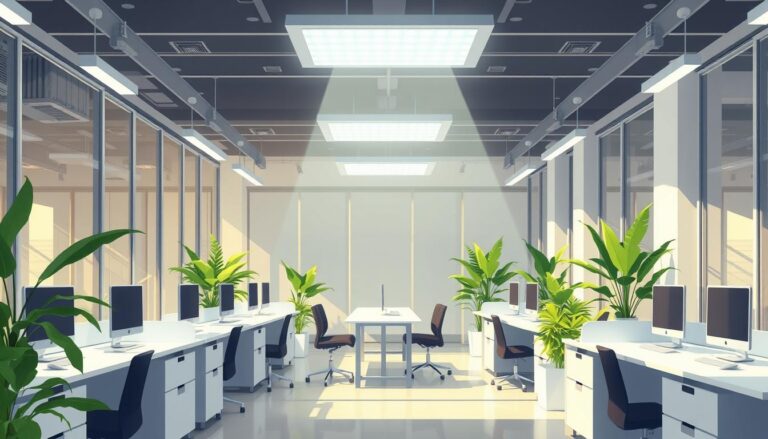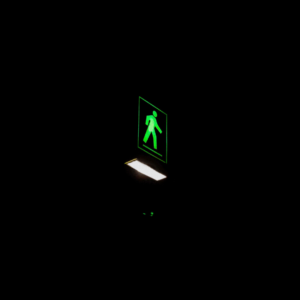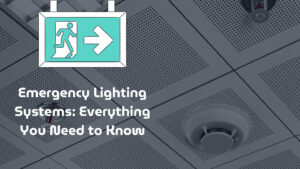Did you know that lighting consumes over 40% of a building’s energy? With electricity costs soaring and a growing emphasis on sustainability, optimising office lighting is now a top priority. This article delves into strategies to cut down on lighting maintenance and replacement costs. It also ensures the workplace remains well-lit and energy-efficient.
Key Takeaways
- Conduct thorough lighting audits to spot inefficient systems and areas for improvement.
- Switch to energy-saving LED technology to lower energy bills and maintenance needs.
- Use smart lighting control systems with occupancy sensors and automated schedules to enhance energy efficiency.
- Adopt daylight harvesting methods to make the most of natural light and reduce artificial lighting use.
- Establish a proactive lighting maintenance routine to prolong bulb and fixture life.
Understanding Current Lighting Expenses and Energy Consumption
To cut down on office lighting costs, start by assessing your current expenses and energy use. Conducting detailed lighting audits, analysing energy bills, and spotting inefficient systems are key steps. These actions provide the insights needed to implement cost-saving measures effectively.
Conducting Comprehensive Lighting Audits
Begin by auditing your office lighting thoroughly. This means evaluating the type, age, and performance of your fittings. A detailed audit will highlight where energy-efficient upgrades or replacements can lead to significant savings.
Analysing Energy Bills and Usage Patterns
Next, examine your energy bills and usage patterns closely. Look for any unusual spikes in electricity use that might point to inefficient lighting or overuse. This information is useful for spotting areas where you can optimise and cut costs.
Identifying Inefficient Lighting Systems
During your audit and analysis, focus on lighting systems that are not performing well or using too much energy. Outdated or poorly designed lighting can be a major expense. Identifying these systems allows you to target them for replacement or upgrade, leading to substantial savings.
| Key Factors to Assess | Impact on Lighting Expenses |
|---|---|
| Outdated lighting technology | Higher energy consumption and maintenance costs |
| Excessive lighting levels | Unnecessary energy usage and safety risks |
| Lack of lighting controls | Inefficient usage and missed savings opportunities |
Understanding your current lighting expenses and energy use is essential. It prepares you to implement cost-effective solutions that offer long-term savings for your office.
Implementing Energy-Efficient Lighting Solutions
Businesses looking to cut down on maintenance and replacement costs are turning to energy-efficient lighting. LED lighting also has a host of other benefits. It uses much less energy than traditional lights and lasts a lot longer, cutting down on the need for frequent replacements.
Transitioning to LED Technology
The move to LED lighting offers many benefits. LEDs can save up to 80% of energy compared to old-fashioned incandescent or halogen bulbs. They also last up to 50,000 hours, much longer than the 1,000-2,000 hours of traditional bulbs. This means less money spent on maintenance and replacements over time.
Smart Lighting System Integration
Adding smart lighting systems to LED bulbs can take energy efficiency and cost savings even further. These systems use sensors and controls to adjust lighting based on who’s around, daylight, and what users prefer. They can automatically change brightness and schedules, saving energy and making lights last longer.
Daylight Harvesting Techniques
- Using natural daylight by placing windows and skylights right can cut down on the need for artificial light during the day.
- Daylight harvesting uses photo sensors and dimmable ballasts to adjust light levels based on sunlight, saving even more energy.
- Adding reflective surfaces and light shelves helps spread daylight around the office, reducing the need for electric lights.
By combining LED lighting, smart lighting systems, and daylight harvesting, businesses can achieve significant energy savings. This not only reduces costs but also helps the environment, making it a step towards a more sustainable future.
Reducing Office Lighting Maintenance and Replacement Costs
Maintaining and replacing office lighting can be a significant expense for businesses. There are strategies to optimise these costs. The key is to prioritise preventive maintenance and consider the lifecycle costs when selecting lighting fittings.
Regular preventive maintenance is essential for extending the lifespan of lighting systems. It helps avoid unexpected failures. This includes cleaning fittings, replacing worn-out components, and ensuring proper operation. By proactively maintaining the lighting, you can reduce the frequency of costly reactive repairs and replacements.
- Implement a scheduled lighting inspection and maintenance programme
- Replace faulty or outdated components promptly to prevent larger issues
- Keep lighting fittingsclean to maximise efficiency and lifespan
When selecting new lighting, consider the lifecycle costs over the initial purchase price. Energy-efficient bulbs, such as LED lights, may have a higher upfront cost. Yet, they can significantly reduce energy consumption and replacement needs over time. This can lead to substantial long-term savings on both energy bills and maintenance.
| Lighting Type | Energy Efficiency | Lifespan | Maintenance Cost |
|---|---|---|---|
| Incandescent | Low | 1,000 hours | High |
| Fluorescent | Medium | 10,000 hours | Medium |
| LED | High | 50,000 hours | Low |
By adopting a proactive approach to lighting maintenance and prioritising energy-efficient solutions, organisations can significantly reduce their office lighting costs over the long term.
Smart Control Systems and Automation Features
Smart control systems and automation features are key to optimising lighting efficiency and cutting costs. These advanced technologies use occupancy sensors, automated scheduling, dimming controls, and remote monitoring. They aim to reduce energy waste and extend the life of lighting fittings.
Occupancy Sensors and Motion Detectors
Occupancy sensors and motion detectors are at the heart of smart lighting controls. They automatically switch lights on and off based on human presence. This ensures energy is only used when necessary, reducing waste and extending the life of occupancy sensors and lighting components.
Automated Scheduling and Dimming Controls
Automated scheduling and dimming controls elevate lighting efficiency further. These systems enable facility managers to set precise lighting schedules and adjust brightness levels. This optimises energy use while maintaining a comfortable work environment.
Remote Monitoring and Management
The introduction of smart lighting systems has brought remote monitoring and management to the forefront. Facility managers can now manage their lighting infrastructure from a centralised dashboard. They receive real-time data on energy consumption, maintenance needs, and system performance. This holistic approach facilitates proactive decision-making and ensures optimal lighting efficiency.
| Feature | Benefit |
|---|---|
| Occupancy Sensors | Automatically turn lights on and off based on presence, reducing energy waste. |
| Automated Scheduling | Programme precise lighting schedules to match occupancy patterns. |
| Dimming Controls | Adjust brightness levels throughout the day, optimising energy usage. |
| Remote Monitoring | Centralised dashboard for real-time data on energy, maintenance, and performance. |
By embracing these innovative technologies, offices can achieve significant cost savings and enhance energy efficiency. This contributes to a more sustainable future.
Best Practices for Lighting Maintenance and Management
Adopting preventive maintenance and lighting management is vital for cutting down long-term costs on office lighting. A proactive stance helps reduce the need for frequent bulb replacements and keeps energy efficiency high.
Creating a detailed maintenance schedule is a fundamental strategy. It should include routine checks, timely swaps of energy-efficient bulbs, and the cleaning of luminaires to ensure peak performance. Choosing durable, high quality lighting parts also cuts down on upkeep needs and boosts system longevity.
- Establish a preventive maintenance schedule for lighting systems
- Replace bulbs with energy-efficient alternatives to minimise replacement frequency
- Clean luminaires regularly to maintain optimal light output
- Invest in high-quality, long-lasting lighting components
Training staff on lighting management is also critical. This involves teaching them the value of turning off lights when not in use, adjusting brightness with natural light, and alerting management to any lighting issues.
By following these guidelines, organisations can enhance the efficiency and lifespan of their lighting systems. This leads to notable cost savings and a greener environment.
Conclusion
In this article, we’ve delved into the essential strategies for cutting down office lighting maintenance and replacement costs. Regular audits of lighting systems, combined with the adoption of energy-efficient LED technology and smart control systems, are vital. They help achieve long-term cost savings and support sustainability in workplace lighting.
Understanding current lighting expenses and energy consumption patterns is key. Facility managers can then pinpoint inefficient lighting systems. This knowledge enables them to make informed choices for more cost-effective and eco-friendly options. Smart control features, like occupancy sensors and automated scheduling, boost lighting efficiency and optimisation.
A holistic approach to lighting management is essential. It includes regular maintenance, energy-efficient upgrades, and intelligent automation. This approach can greatly reduce both financial burdens and environmental impacts from office lighting. By adopting these strategies, businesses can lower their operational costs and contribute to a greener future.
FAQ
What are the benefits of conducting a comprehensive lighting audit?
Starting with a detailed lighting audit is key to spotting ways to cut down on lighting upkeep and replacement costs. It lets you check your current energy use, spot out-of-date lighting, and collect data for cost-saving changes.
How can transitioning to LED technology help lower lighting costs?
Switching to energy-saving LED lights can greatly cut down on energy use, upkeep, and replacement costs. LEDs last much longer than old bulbs, so you won’t need to replace them as often.
What is the role of smart lighting controls and automation in reducing lighting costs?
Smart lighting systems, like occupancy sensors and automated timers, help save energy and make lights last longer. They ensure lights are only on when needed, boosting efficiency and cutting down on upkeep.
How can preventive maintenance practices help lower lighting costs?
Setting up a thorough preventive maintenance plan can make your lights last longer and need replacing less often. Regular checks and clean-ups keep your lighting system running smoothly, saving you money in the long run.
What are the benefits of considering lifecycle costs when selecting lighting fittings?
When picking lighting, think about the whole cost over time, not just the upfront price. This includes energy use, upkeep, and replacement costs. Choosing fittingswith lower lifecycle costs can lead to big savings over time.
How can daylight harvesting techniques help reduce lighting costs?
Using natural light and smart dimming controls can cut down on the need for artificial light during the day. This approach saves energy and makes your lights last longer, reducing upkeep and replacement costs.












